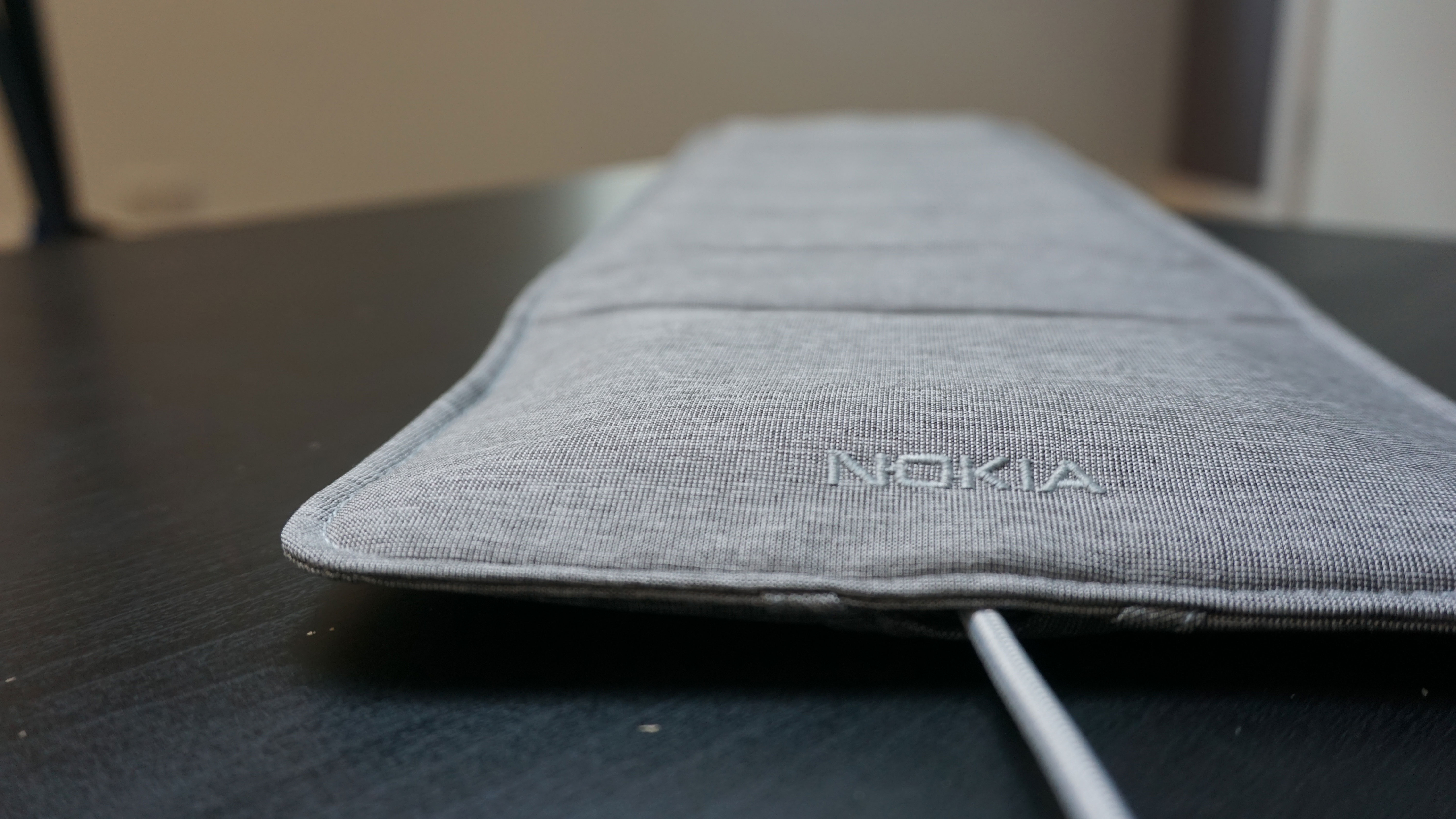TechRadar Verdict
The Nokia Sleep offers lots of stats and means you can monitor your sleep quality without having to wear an annoying wrist-based tracker, but it's a high price to pay considering you can get cheaper fitness trackers.
Pros
- +
Don’t have to wear a tracker
- +
Lots of data from easy-to-use device
- +
Full health picture with other devices
Cons
- -
Only works for one person
- -
Not cheap
- -
Difficult to find on sale
Why you can trust TechRadar
It’s all well and good improving your step count, exercising lots and eating right, but it’s now commonly understood that you also need to make sure you're getting good quality sleep in order to be as healthy as can be.
More and more people are starting to realize this, and that’s why fitness trackers and smartwatches have started to track your sleep stats as well as your step count and exercise stats.
The Nokia Sleep won’t work like the Apple Watch 3 or the Fitbit Charge 2 on your wrist though. This sleep pad slots under your mattress to monitor your sleep without you having to wear an annoying tracker or device around your wrist or chest.
The Nokia Sleep stays under your sheets to track all of your sleeping stats and feeds everything back into the Nokia Health Mate app. Below we’re going to dive into the information you get from the pad to give you the full verdict on what we think of this specialist sleep tracker.
Nokia Sleep price and release date

Originally announced back in January 2018 at CES 2018, this is a rebrand and slight reworking of the Withings Aura Sleep System that was previously on sale before the company was bought by Nokia Health.
Now it includes the Nokia Health branding we’ve seen on previous products like the Nokia Steel HR fitness tracker, as well as smart scales including the Body, Body+ and Body Cardio devices.
You’re able to buy the sleep tracker now in both the UK and US for £99.95 or $99.95 (about AU$130) respectively. That makes it a touch more expensive in the UK, which is a bit of a shame for those who live there. We don’t know if the company plans to bring the Nokia Sleep to Australia, but we’ll update this review if we hear any further details for that market.
It’s worth noting that at the time of writing this review the Nokia Sleep was out of stock, so you might find it tricky to get hold of.
Design
Unlike fitness trackers that strap around your wrist to monitor your sleeping patterns, this is a pad that sits underneath your mattress so you won’t have to remember to wear anything at night to get your stats.
The pad is grey and what the company calls ‘premium fabric’. It fits into most homes with an inoffensive design that slots under the mattress of your bed so it’s mostly hidden from view. Visitors to your bedroom won’t immediately spot the Nokia Sleep pad when exploring your home, but the cable will hang out slightly so it’s not entirely hidden.

This dangling cable can also be a pain if you don’t have a socket near to your bed, as it needs to be plugged in. The cable is lengthy though, so it should be able to reach a faraway socket if needed.
The setup process is simple enough, but you need to place the pad in a specific place where your chest will be to get the optimum results.
This shouldn’t be a problem for most homes, but it’s worth noting that you can’t just place this under your head or at the bottom of the bed where your feet will be. The design also means it only works for one person.
We found the pad to be surprisingly long at 64 x 20 x 0.5cms, but the thickness shouldn't be an issue, as when you climb into bed after you’ve slotted it under the mattress you won’t realize how much higher you’ve gotten.
In fact, with our mattress we didn’t notice any change at all, so this shouldn’t be an issue if you’re worried about being uncomfortable lying on this.

Once you've placed the pad, you'll then connect the sleep pad up with the app and to your home Wi-Fi. Then when you climb into bed at night the pad will automatically begin recording your details, ping them to the home Wi-Fi, and they’ll appear within the Nokia Health Mate app for you to view. More about that below.
Overall the design of the Nokia Sleep is okay, but it’s mostly not on view so it’s not a problem that this isn’t the most attractive smart home device on the market.
The likelihood is you’ll slot this under your bed and find yourself forgetting about it until you spot the cable once in a blue moon.
Sleep tracking
After you’ve slipped the pad under your bed, it’s time to start monitoring your sleep. The Nokia Sleep immediately knows when you’ve jumped into bed, but it also knows much more about your night, including the times you’ve got up for a wander.
Features include the time it took you to get to sleep, so it’ll know if you’ve sat in bed on your phone. This won’t just monitor how long you’ve been asleep though, it goes into a lot more detail.
First off it’ll monitor your time in bed and the time you spent asleep, so you can work out if you’ve been distracted in bed and whether you’re regularly wasting valuable sleeping time. It’ll also tell you the amount of time it takes you to wake up and get out of bed.

The next stats it’ll track are your sleep cycles. That means it can tell you how much you’ve been in deep, light and REM sleep phases, which you’ll need a mixture of throughout the night to ensure you’re getting the best quality sleep.
It’ll also monitor your heart rate throughout the night to give you an average recording as well as your continuous score. Plus it’ll monitor when you’ve been snoring too, and tell you the amount of time you spent making lots of noise in the night.
Everything is displayed within the app, and you can see the disturbances in your night in an easy to read graph, so you'll know when you moved between deep, light and REM sleep, and when you woke up in the middle of the night.
Once you’ve tracked a few night's sleep, the Nokia Sleep will also monitor the regularity of your sleep pattern. This is something that’s difficult to get right in the mania of modern life, so don’t expect this score to always be positive.
Every night is distilled into a handy ‘Sleep Score’, and the app shows you how positive or negative that is by surrounding it with negative red, middling orange or a positive green. Exactly what you can do with this data is a bit unclear though, and this doesn’t really help you improve your night’s sleep.
It’s important to note that the score isn't just based on how long you’ve slept. We had one night of 7 hours and 30 minutes of sleep that scored 96 out of 100, but another later in the week that was 8 hours and 2 minutes long that only scored 83 out of 100.
That’s because it was at an irregular time, so that brought the general sleep quality down. These stats are useful, but there’s a limited amount of information in the app to help you improve on your sleep quality.
All of the individual stats that the Nokia Sleep provides seemed to be accurate in our testing when we compared it with other wrist based fitness trackers that can monitor similar results as well as how we felt our night's sleep went.
Perhaps our biggest frustration with the Nokia Sleep is the lack of advice after you’ve been tracking your sleep. We were hoping it would provide some details on how to improve your scores.

When we did some digging into why that score was more negative than previous nights, it told us regularity had to be improved but didn’t reveal what the window would be that we’d need to be sleeping in.
There is advice here, but it’s not personalized based on how you’ve slept on previous nights and that’s a little frustrating when the app clearly has all of your sleep data on hand.
The interface of the Nokia Health Mate app is intuitive though, and it works well if you have another Nokia device as well. For example, the Nokia Steel HR or the Body Cardio scale appear in the app alongside your sleep tracker so you can get a full picture of your health with your step count, weight and sleeping patterns all in one place.
This is really useful if you want a full picture of your overall health, and it could be worth investing in the Nokia Sleep even if you already have a Nokia Steel HR, as the sleep pad provides a more accurate picture of your sleep.
Another useful feature for you may be the IFTTT integration within the Nokia Sleep pad. It means you can set up your smart lights or heating to know when you’ve gotten out of bed and have them switch on automatically.
We’ve yet to properly test this feature and we'll be sure to try it out at a later date for an update to this review.
Verdict

Somewhere between health product and smart home device, the Nokia Sleep is an interesting product for anyone who wants to be able to keep track of their sleep quality without having to wear a gadget to bed.
We like this tracker a lot, and while it may not be one of the most affordable sleep trackers on the market this offers a lot more tracking than most of the competition, as it monitors the likes of your snoring and heart rate, as well as the amount and quality of sleep.
The plug in and forget element of the Nokia Sleep is a big benefit too. If you do own a fitness tracker or smartwatch, you can rest easy knowing you can charge it at night as the Nokia Sleep will be monitoring your sleep quality.
Right now the Nokia Sleep doesn't offer much insight into how to improve your night's sleep, but if you're willing to do some research, the raw stats of your sleep quality are here.
You should buy this tracker if you want something to slide under your mattress and keep an eye on your sleep quality quietly, and if you own other Nokia Health products this will be the perfect opportunity to have your full health picture in one place.
The price is high considering cheaper fitness trackers can monitor your sleep as well as your step count and exercise regime, but if you don't mind spending a bit more money to get a full picture of your night's sleep this will be a great product for you.
James is the Editor-in-Chief at Android Police. Previously, he was Senior Phones Editor for TechRadar, and he has covered smartphones and the mobile space for the best part of a decade bringing you news on all the big announcements from top manufacturers making mobile phones and other portable gadgets. James is often testing out and reviewing the latest and greatest mobile phones, smartwatches, tablets, virtual reality headsets, fitness trackers and more. He once fell over.

